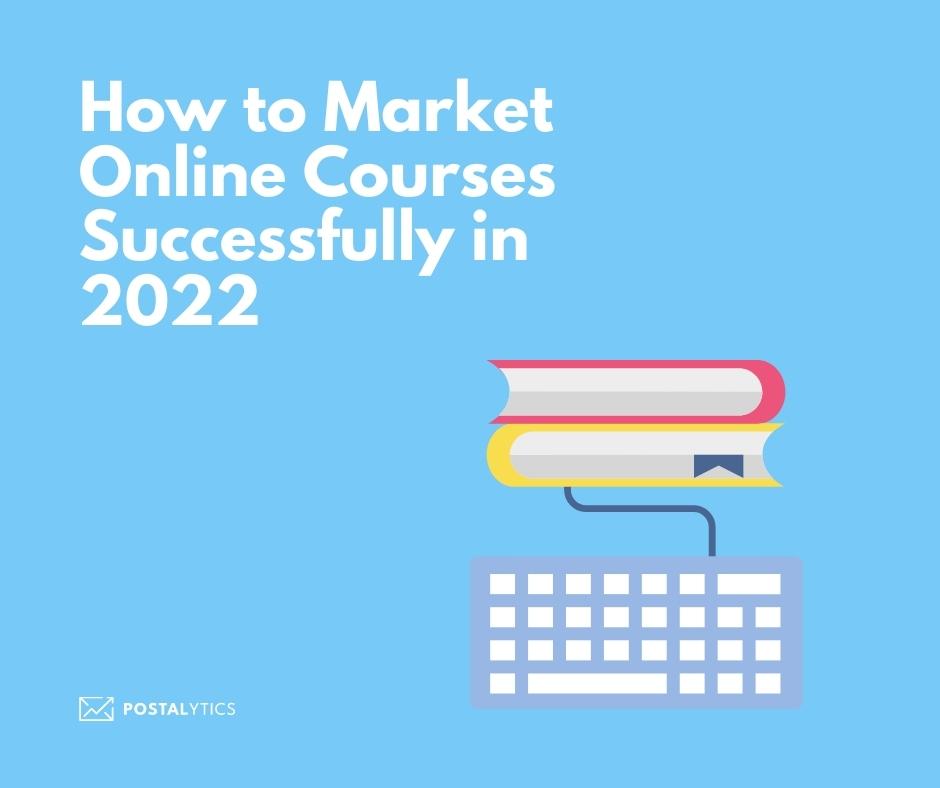
How to market online courses successfully?
Many universities like Harvard are offering paid or free online courses depending on students’ needs as the demand for flexible learning options increases.
In addition, online courses can provide better educational access to students globally via digital devices.
Signing up for a free course allows students to get global exposure, maximize learning, and interact with a large audience.
The online course marketplace is growing with the increasing demand, making building a profitable online course business a good option.
Educational institutes use course material and incorporate multimedia sources like YouTube to help students grasp concepts better. Anyone can create online courses, but knowing how to market them matters the most.
There are many options, including social media marketing, paid sales campaigns, and PPC, but direct mail integrations for your online course are best for those who want to start selling their courses.
Table of contents
- Do Online Courses Sell Well?
- Who Buys Online Courses?
- How do You Successfully Market an Online Course?
- Send Physical Certificates And Diplomas Natively In The U.S. And Canada
- Final Words
Do Online Courses Sell Well?
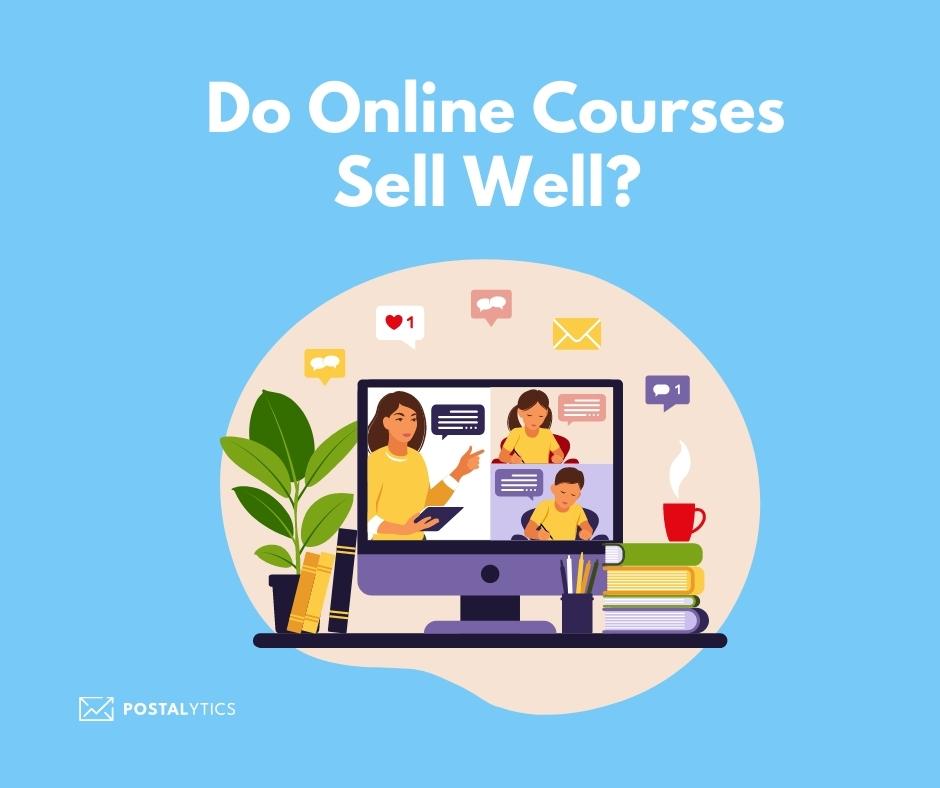
Several online learning platforms like Coursera offer millions of paid and free courses. As a result, their students increased rapidly as Coursera recorded 20 million new student registrations in 2021.
Online courses can sell well depending on your target audience, courses, and certification. Interest in online learning increased during the pandemic when people switched to online education, and many institutes began to sell courses online, providing a good revenue stream.
Popular platforms like Udemy, Coursera, and Lynda, helped pioneer online course trends by providing courses for separate domains.
For instance, SkillShare focuses more on creative learning for fields like animation, design, 3D modeling, etc., while Coursera focuses more on conventional subjects by providing university course access. Stanford and Harvard were some of the first institutes to incorporate the online learning courses for subjects including:
- Art
- Business
- Computer science
- Engineering
- Mathematics
- Personal development
These platforms understood that students have issues assessing emerging technologies and understanding options that can help them grow.
Many teachers also introduced their online courses to help students learn effectively. Online training requires understanding the student’s pain points, incorporating the right marketing efforts, and more. Devising and selling online courses also requires patience as a course creator.
This little tip can also help understand the sales funnel and produce better learning outcomes for both parties.
The online learning market was worth around $250 million in 2020 and has increased in the past years. The courses provide several personalized options for users who want to create an online course, run an online business, or study other courses simultaneously.
How Much Can You Make Selling Online Courses?
Online courses are a huge attraction for students because they offer a lot of flexibility.
Students love investing in a course they can take any time, which helped course creators increase revenue during the past years. Many online course creators have inspiring stories regarding these new earning streams.
Course creators can earn anywhere between $1000 to more than $10,000 a month, depending on their course niche and students. This is a major reason why course creators spend considerable time creating the perfect marketing strategy in the e-learning market.
Think of it as creating an additional revenue stream in the beginning for website visitors and then using it as a primary income source.
A course with 10,000 visits with a 2% conversion rate for an $89 course could make $17,800 in sales easily.
It is important for content creators to differentiate between revenue and profit to better understand the e-learning market potential. Revenue is the total amount you gain from the online course, whereas profit is the amount left after paying all the expenses.

Who Buys Online Courses?
Anyone on the internet can buy an online course by either paying for it or registering for a free account. It is important to market to the correct target market. For instance, if you have an online course for medical students, it does not work trying to get course sales from other domains, even if you offer a free email course.
Therefore, it is important to create a course that resonates with the buyers on the platform.
The online course’s target audience includes anyone who wishes to learn remotely and is interested in the subject matter you offer. These people could be from any background, group, or discipline wishing to learn from your course.
However, your online course development strategy will affect who buys your online courses.
Decide Who You Want to Help
Creating the perfect course begins with considering who can benefit from your course the most. Try to think of a group you can understand better than anyone else.
You must also think about what you care for the most or if there is a specific community that can benefit from your knowledge.
For instance, you could create your online course on the basics of photography and market them through Facebook groups or other social media sites interested in that topic.
However, as the course will not assist professional photographers, it is important to know you create the course for photography hobbyists.
Understand Specific Regions
Understanding regional or geographic course buyers can help improve your course’s relevancy. For instance, you wouldn’t want to talk about the subcontinent too much if your target audience wants to know about American history.
Keeping these regional differences in mind can help create precise digital courses and promote them more efficiently. Using specific region-based language can also assist.
Simple marketing tactics like offering a free mini-course help online instructors understand their classrooms better.
Carry out Audience Research
Whether you run a blog post or have your own website, incorporating the right research tactics can help attract potential students to the course page. You can also partner with an existing online school to create an online course utilizing their research data.
The research will also impact who buys the online course because you will formulate the course accordingly.
How do You Successfully Market an Online Course?
Marketing an online course is just as important as creating one because if you don’t promote your course, you won’t get any sales. To promote your own online course, you will need a marketing strategy in place.
Creators need to know the best marketing practices for online courses, so let us look at them in detail.
Pay Per Click (PPC) Ads
Pay per clicks ads are a fundamental practice when it comes to successfully marketing an online course.
PPC is the fastest way of increasing site visitors if you want more students on your online course. You can think of pay-per-click ads as a digital billboard where you can put up your ads to generate revenue.
Google charges a small amount for each click on your online learning website. With that said, there are some essentials to keep in mind while creating PPC ads.
Know Where to Advertise
PPC is a paid service, and it is best to incorporate practices that help reel in maximum results. It would be best to start by focusing on a region or group to build brand awareness and increase the number of potential students on your website.
Choose the Right Keywords
It is vital to choose the right keywords that your potential customers will search for. Without researching the appropriate keywords, customers won’t find your course sales page.
Link the PPC ad to a Persuasive Link
A well-targeted ad can help increase conversion rates for your course. Prospective students must reach the landing page with minimum clicks.
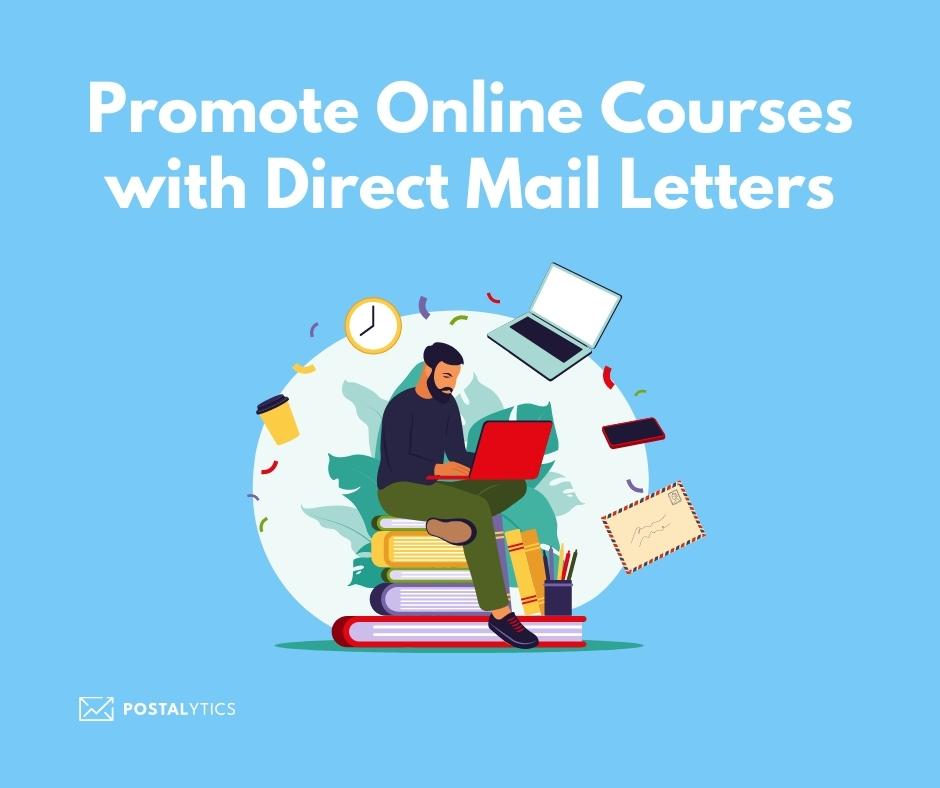
Direct Mail Letters
Perhaps the most effective strategy is direct mail.
Direct mail letters are a popular digital marketing tactic in the online course industry because they provide additional exposure, better response, and many other benefits that other marketing methods may lack.
For instance, an email stays in a recipient’s account for as long as 7 seconds, whereas a direct mail letter can stay for 17 days or more. People are more likely to respond to a physical piece of mail than an email.
To assist with any direct mail campaign, you need to choose a professional direct mail letter service like Postalytics.
Here are a few tips to help you create the perfect direct mail letters for your online courses.
Use Engaging Language
Direct mail letters are quite personal, and it is important to connect with the audience. Using engaging language and interacting with the buyers personally can help increase the conversion rate. Communicating in a fun and engaging way is an excellent way to grab the student’s attention.
With Postalytics, you can personalize your campaign and include the recipient’s name and any other data you have on them. Personalization will increase the response rate.
Add Helpful Resources
A potential customer would appreciate any helpful tips and related course materials to stay informed. Therefore, including some helpful resources in your direct mail will help the online course’s credibility and present you as a credible learning source.
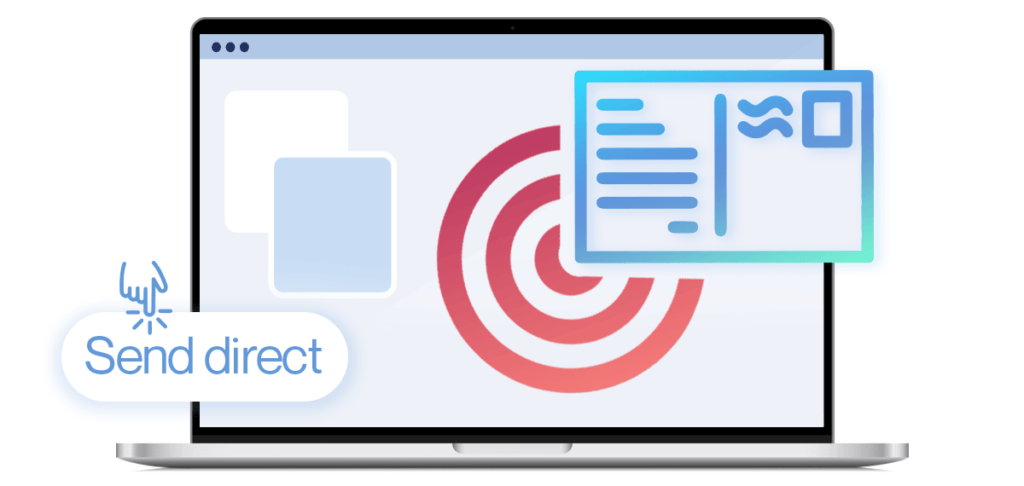
Direct Mail Postcards
Another good option is to send direct mail postcards.
Direct mail postcards are like a small brochure, coupon, or announcement aimed at a particular group. Using these postcards the right way can significantly increase the number of new students in your course.
Postalytic’s direct mail postcards are ideal for selling online courses to different student groups and target multiple regions simultaneously. You can choose from one of our free templates or create your own design with our system. Even if you have limited marketing experience, you will find it simple and efficient to use our platform.
Target Repeated Customers
Direct mail postcards to past clients are a great way to drive traffic. You can give them special offers or advise them about new courses.
You can share the course outline, list the online class schedule, gather feedback, or add other course content for better conversion rates.
Using a powerful marketing tool like Postalytic’s direct mail retargeting can help improve traffic on your own website. It can help course creators with a personal brand or a freshly introduced online course.
Keep the Mails Interesting
Students get many targeted emails through different brands, including online learning sites. Thus, your marketing messages should stand out from the rest and be as attractive as possible.
Using words like “free course,” “discounts on the first online course,” and “unlock course content” can be especially powerful.
Focus on Benefits, Not Features
Online course marketers should focus on the benefits of their courses and how they can help students grow.
For instance, focusing on how a particular topic or sub-section in an online class can attract more online students to your course.
Including testimonials from past students and what they learned from our course can also build your credibility.
Q.R. Codes
QR codes are a quick and effective method of allowing users to find information online with a simple scan. Most smartphones come with in-built Q.R. code systems, making them ideal for quick access.
The Postalytics system allows you to use Q.R. codes and personalized URLs (Purls).
This is a great way to assist customers in finding information easily, as well as provide tracking so you can measure the effectiveness of a campaign. Our system also allows unlimited Q.R. code sharing so that users can share as many Q.R. codes for their online courses.
Examples Of Marketing Strategies For Online Courses
Using professional direct mail services for marketing online courses may seem complicated, but it is quite simple to access and use. This case study showcases how utilizing direct email marketing in the education sector was effective in enrolling more students. The customer faced challenges that they overcame with the assistance of Postalytics.
The Challenge
The client’s biggest challenge in selling their course was the state license requirements varied for each customer. Factors such as timing, number of hours, and scope of the education changed the licensing requirement for the client.
Solution: Dynamic Content In Direct Mail via Automation

A level of marketing diversity was required to run a successful online course campaign.
Therefore, the client-focused more on postcards, sending 40,000 postcards per month. In addition, the print, subscription, and mail charges changed to assist clients during this time.
Challenges Of Marketing Online Courses
Marketing online courses can present some challenges.
Here is a breakdown of some common challenges you might find:
Prioritizing Mobile Content
A wide majority of online learning students use platforms via mobile because of their flexibility. However, the academic courses won’t benefit students if they are not optimized for mobile content.
Google first started updating its algorithms for mobile devices back in 2016, and now the majority of the traffic comes from mobile devices. So, your online course must have mobile responsive features.
Creating A Dynamic Website
Quality content is a major concern for website owners today because search engines have become more sophisticated.
Making your website dynamic or publishing new content regularly is the easiest way to ensure your site looks attractive to customers. News sites, Netflix, and other streaming services follow a dynamic website approach.
How To Market Online Courses On Social Media
Social media is an increasingly popular platform for marketing courses. Creating a strong social media presence requires following multiple standards and industry requirements that we will discuss below.
Define Personas and USPs of Online Courses
Categorizing courses into categories for different groups is the fastest way to make your courses more relevant. Website visitors should be able to select online courses according to their preferences.
Highlighting the unique selling point (USP) of your course is important. Why should people choose your course over that of your competitors? Showcase what makes your course the best and the benefits to students.
Choose the Right Social Media Platform
Choosing the right social media platform for your online course marketing will affect the results.
You need to find out which platform your potential target market uses the most.
For example, the majority of the students now exist on Twitter, making it a better alternative for marketing online courses.
Market Online Courses For Free
When you launch your first course, you may not have a big budget. However, there are a few free marketing tactics you can employ.
Create a Blog
Creating a blog is ideal for sharing new courses for online students. You can feature different courses blog throughout the blog and target more customers.
Add Student Testimonials
Adding service testimonials on your website is a quick way to build credibility. Other students visiting your website will look for recommendations from people who have participated in your course before.
Create a Course Page on the Main Website
Create a website for an online course and add a separate page for online courses. You can create sub-sections for each course genre as well.
Send Physical Certificates And Diplomas Natively In The U.S. And Canada
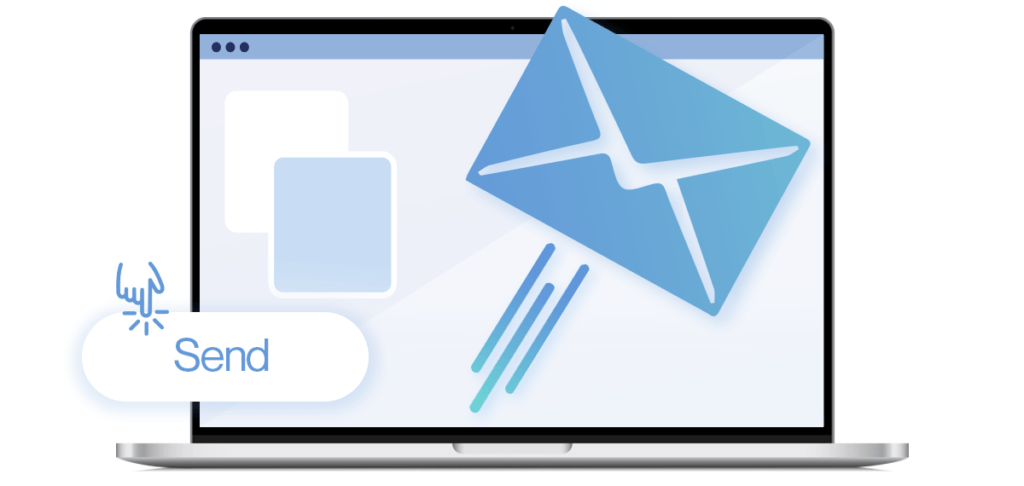
Sending students physical certificates and diplomas in the U.S. and Canada once they have completed their online course is a great option. With Postalytics, this is an easy take to accomplish. Find out more on the direct mail automation options in Canada in this comprehensive blog post.
Final Words
Marketing online courses require planning, resources, and a strategy to achieve a successful online course.
The best option is utilizing a direct mail service like Postalytics. Our full range of direct mail tools will help you sell online courses and help build passive income.
We have plenty of useful resources in our Frequently Asked Questions, which will answer any queries. In addition, please be sure to visit our blog page to get the most up-to-date information.
About the Author

Dennis Kelly
Dennis Kelly is CEO and co-founder of Postalytics. Dennis joined Boingnet, the predecessor to Postalytics, in 2013. Boingnet was focused on providing print and direct mail marketing service providers the ability to add digital marketing channels to their direct mail campaigns. Postalytics is Dennis’ 6th startup. He has been involved in starting and growing early-stage technology ventures for over 30 years and has held senior management roles at a diverse set of large technology firms including Computer Associates, Palm Inc. and Achieve Healthcare Information Systems.
